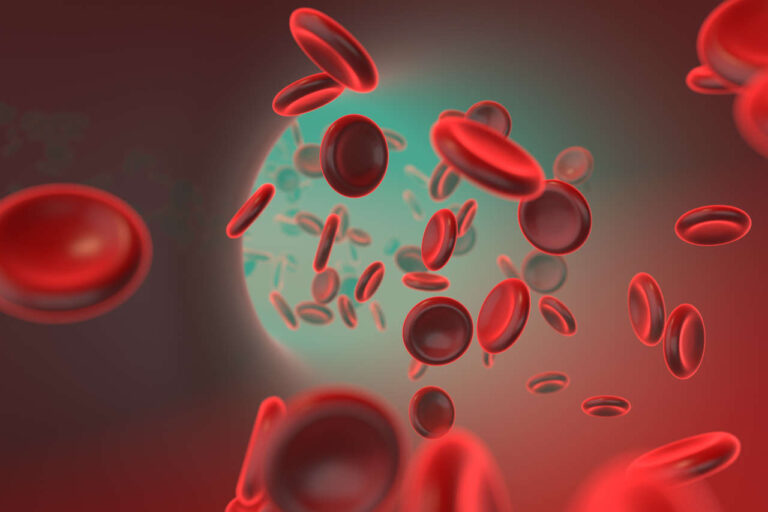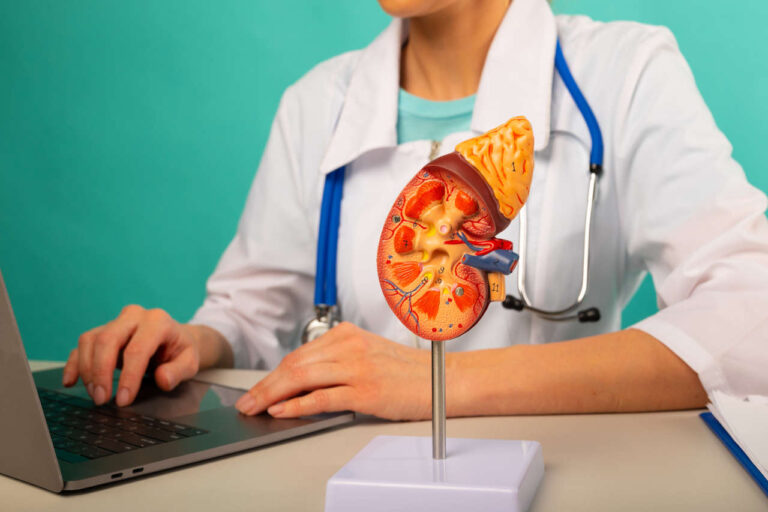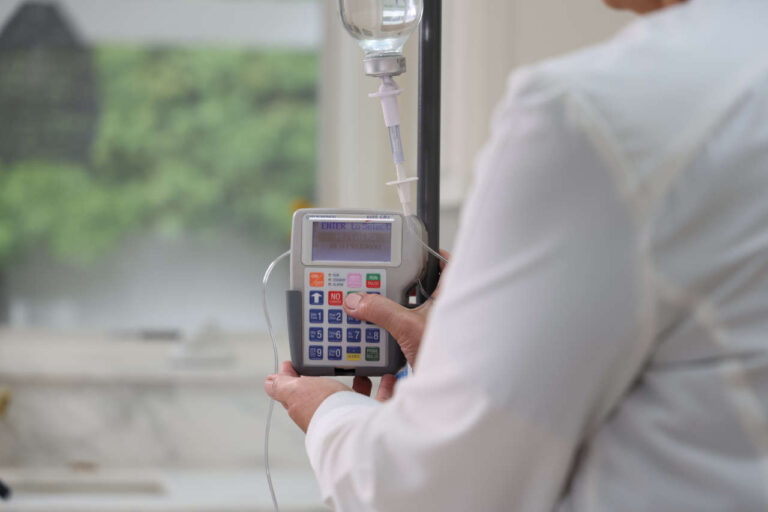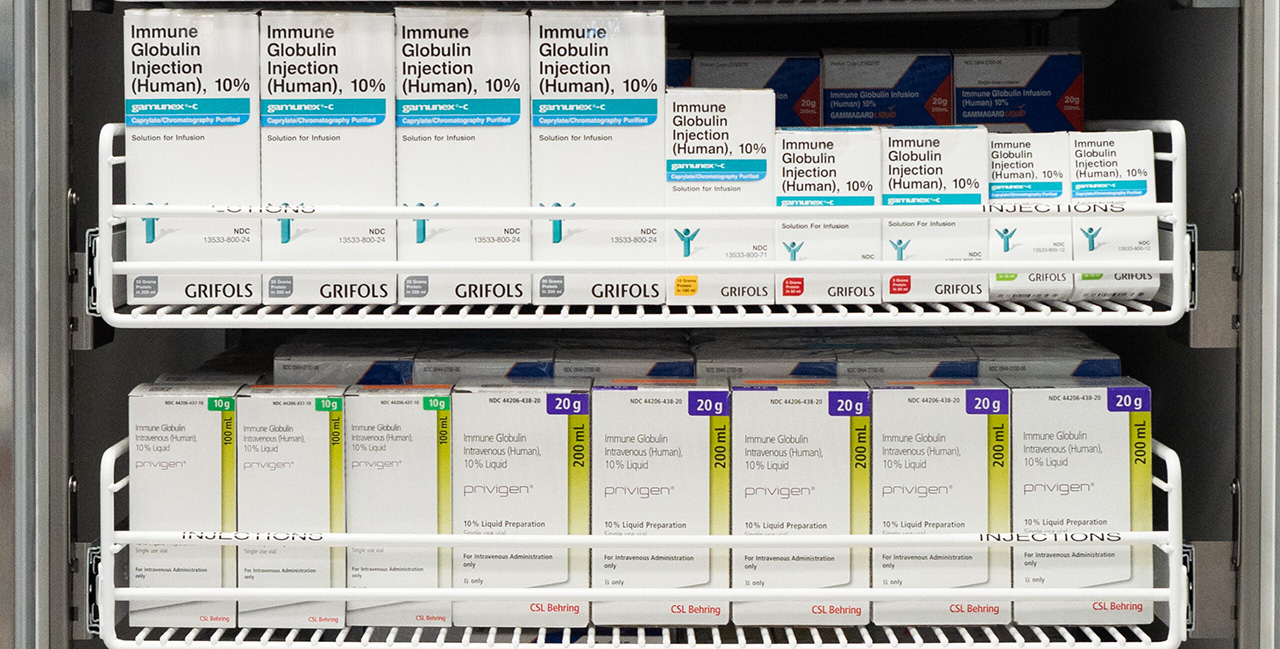
Immune globulins (or immunoglobulins) are specific proteins produced by plasma cells. The main function of immunoglobulins is to strengthen the body’s immune system in order to fight off infections. People with certain immune system disorders — such as autoimmune diseases or antibody and immune deficiencies — need to receive immunoglobulin infusions. Immunoglobulin infusions are made by collecting plasma, the liquid portion of blood, from thousands of healthy donors.
There are five types of immunoglobulins:
- IgG
- IgA
- IgM
- IgE
- IgD
An immunoglobulin infusion mainly consists of IgG immunoglobulins. The infusion can be given through the veins (called an IVIG infusion) or under the skin (called a SCIG infusion).
Get IVIG Copay Assistance
Speak to a SpecialistWhat Does IVIG Treat?

Immune Deficiency
Immunoglobulin (Ig) infusion can be used to treat conditions where your body does not naturally make enough antibodies, such as primary immunodeficiency (PI).
Autoimmune Disorders
An autoimmune disorder is when the body’s immune system mistakenly attacks other healthy cells and tissues. Immunoglobulin infusions would offer protection to body tissues from further damage.
How It Works
An IVIG infusion helps with conditions involving immune deficiency and autoimmunity in the following ways:
- The exact mechanism of action is unknown, but it is believed that immunoglobulin infusion therapy neutralizes the autoantibodies that the body produces in autoimmune conditions.
- In inflammatory and autoimmune conditions, an immune globulin infusion prevents the activity of B and T cells. Without the activation of B and T cells, autoantibodies aren’t produced that would otherwise cause tissue damage and inflammation.
Conditions Treated With IVIG
An IVIG infusion can be used for the following conditions:

Neurological Conditions (Conditions Involving Nerves and Brain)
| Guillain-Barre Syndrome (GBS) | An autoimmune condition destroying the nerves and causing weakness, paralysis, tingling, numbness, and pain of the extremities. Weakness can begin in the leg and spread to the arms, torso, and face. |
| Multifocal Motor Neuropathy (MMN) | A slowly progressive autoimmune condition affecting multiple nerves in the body, causing muscle weakness of the extremities. |
| Myasthenia Gravis (MG) | An autoimmune condition of nerves causing weakness in the skeletal muscle, most often appearing first in the face and neck. |
| Chronic Inflammatory Demyelinating Polyneuropathy (CIDP) | A rare autoimmune condition causing damage to nerves, resulting in weakness, pain, numbness, and a burning sensation in the arms and legs. |
| Dermatomyositis and Inflammatory Myopathies | Rare conditions causing skin rash and muscle weakness. |
| Multiple Sclerosis (MS) | The body’s immune system attacks nerve cells, resulting in numbness, fatigue, and paralysis. |
| Lambert–Eaton Syndrome | Similar to MG, Lambert-Eaton syndrome is an autoimmune syndrome that causes muscle weakness. |
| Neuropathy | A condition that causes pain, numbness and weakness from nerve damage in the arms and feet. |
| Autoimmune Encephalitis | A serious condition affecting the brain that can result in hallucinations, seizures, and abnormal movements. |
Get IVIG Prior Authorization

Dermatological Conditions (Skin Conditions)
| Kawasaki Syndrome | An autoimmune condition mostly affecting children, causing inflammation of the blood vessels and heart. Symptoms include high fever and peeling skin. |
| Toxic Epidermal Necrosis | A rare, life-threatening skin reaction causing extensive skin peeling, blistering, and pain. |
| Other Skin Conditions | Examples include scleroderma, atopic dermatitis, and other blistering disorders. |
Hematological Conditions (Blood-Related Conditions)
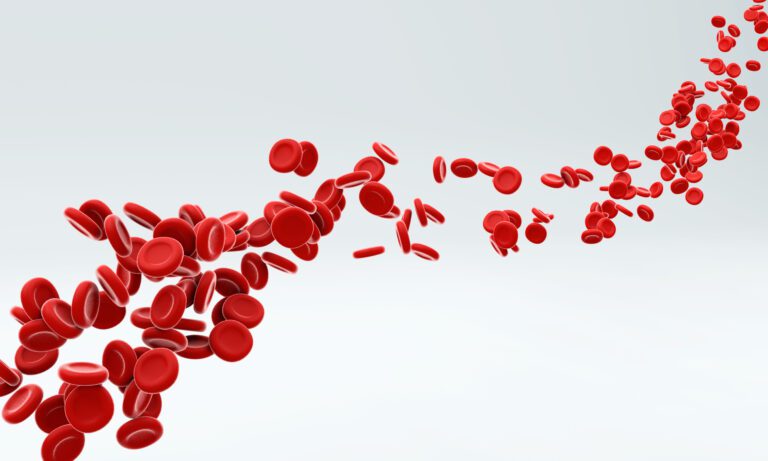
| Immune Thrombocytopenia | A condition that results in low platelets (cells that help blood clots form) due to autoimmune destruction, resulting in easy bruising and bleeding. |
| Hematological Cancers | Examples include myeloma and chronic lymphocytic leukemia. |
| Bone Marrow Transplant | IVIG therapy is used following a bone marrow transplant to prevent rejection of the transplant. |
| Other Hematological Conditions | Examples include autoimmune hemolytic anemia, immune neutropenia, and bone marrow aplasia (where the bone marrow is not producing blood cells). |
Immunological Conditions
| Primary Antibody Deficiency (PAD) | PAD results from genetic disorders resulting in decreased antibody production. These conditions include agammaglobulinemia (XLA) and hypogammaglobulinemia (CVID). |
| Secondary Antibody Deficiency | A condition caused by the destruction of antibodies that the body produces due to a disease, infection, or medication. |
Other Conditions
| Kidney-related (Nephrology)
Joint-related (Rheumatology) Eye-related (Ophthalmology) Infectious Diseases | Examples include vessel inflammation (systemic vasculitis), systemic lupus erythematosus (autoimmune inflammation of multiple body organs), uveitis (eye inflammation), and infectious diseases such as hepatitis, tetanus, etc. |
How Well Does IVIG Work?

An IVIG infusion is an effective therapy for neurological conditions. Several randomized controlled trials (RCTs) have shown that an IVIG infusion is effective in both short-term (acute) and long-term (chronic) conditions, such as CIDP, MG, inflammatory myopathies, GBS, and multifocal motor neuropathy.
A comprehensive review by the American Academy of Allergy, Asthma, and Immunology concluded that IVIG therapy is highly beneficial for treating primary immunodeficiency diseases, such as hypogammaglobulinemia, and conditions characterized by absent B cells.
In addition, large-scale studies have found IVIG therapy to be effective for idiopathic thrombocytopenic purpura (ITP), dermatomyositis, rheumatoid arthritis, and inflammatory myositis.
How Long Does IVIG Take To Work?
Following the initial treatment, it may take several days to weeks before you may experience any improvement in symptoms. It can also take up to a few months before you start to see more pronounced improvement in your symptoms.
Here at AmeriPharma, we specialize in administering IVIG infusions. You will be closely monitored during and after the IVIG treatment by a team of pharmacists working with your prescriber.
Keep in mind that everyone responds differently to medications. Our pharmacists routinely monitor your treatment progress and communicate with you to address any potential concerns regarding your therapy.
IVIG Side Effects
IVIG infusion side effects are common and can occur at some point during IVIG therapy.
The IVIG side effects can be classified into:
- Immediate adverse events
- Delayed adverse events
Immediate Adverse Events
IVIG therapy side effects are considered immediate if they occur during the infusion or soon after.
The most common immediate side effects include:
- Flu-like symptoms and headache: Flu-like symptoms include fatigue, fever, and chills. These are some of the most common side effects. Your healthcare provider might give you other medication (e.g., acetaminophen [Tylenol], an antihistamine, or a steroid) shortly before the infusion to help prevent these side effects.
- Skin reactions: A minor rash may occur.
- Hypertension and arrhythmia: High blood pressure and an irregular heartbeat may occur. You’re at higher risk for these side effects if you are dehydrated during the therapy or if the infusion is given too quickly. A healthcare provider will monitor you and stop the infusion immediately if needed.
Delayed Side Effects
Delayed IVIG side effects can occur months or years after the IVIG therapy. These IVIG side effects occur in less than 1% of the recipients of IVIG therapy. The long-term side effects include:
- Thrombotic (blood clot) events: Clots can form in the legs (deep vein thrombosis), lungs (pulmonary embolism), heart (heart attack), or brain (stroke), which can be severe and life-threatening. The risk will also depend on your other medical conditions and how fast the IVIG infusion rate is.
- Neurological (brain and nervous system) disorders: Examples include meningitis (inflammation in the tissues in the brain), seizures, and nerve damage.
- Kidney damage: This may be due to the failure of the kidneys to clear out IVIG proteins.
Ask an IVIG Specialist about Side Effects
Most Common Side Effects
Mild Side Effects |
What to do |
| Headache, nausea, minor skin rash, high blood pressure, abdominal pain, diarrhea, flu-like symptoms |
|
Moderate Side Effects |
What to do |
| Severe headache, body swelling, nausea/vomiting, skin rash, diarrhea lasting more than 24 hours | In addition to the above, seek medical assistance immediately as these side effects are not expected. |
Severe Side Effects |
What to do |
| Fever, anaphylaxis, severe abdominal pain, very high blood pressure, irregular heartbeats, chest pain, difficulty in breathing | Seek urgent medical assistance. |
At AmeriPharma® Specialty Care, our pharmacists make sure you are closely monitored during and after your IVIG therapy to ensure you do not develop any side effects.
Should you experience any side effects after your IVIG therapy, you can always seek assistance from our experts 24/7. Our team is always there to help you.
IVIG Dosing: How IVIG Dosing Is Determined

IVIG dosing depends on the condition being treated and your body weight. The dosing is summarized below. But keep in mind that dosing may differ depending on the IVIG brand you are prescribed. Common brands include Gammagard, Gamunex-C, and Privigen, among others.
Condition |
IVIG Dosing |
| Primary Immune Deficiency | 0.3–0.6 g/kg/month initially, followed by an increased dose depending on the response |
| Immune Thrombocytopenic Purpura (ITP) | 1 g/kg/day for 2 consecutive days (second dose may be withheld if adequate platelet response in 24 hours) or 400 mg/kg once daily for 5 consecutive days |
| CIDP | Loading dose: 2 g/kg (in divided doses over 2 to 4 consecutive days); Maintenance: 1 g/kg administered over 1 day every 3 weeks |
| GBS (off-label use) | 2 g/kg given over 2 to 5 days |
| Inflammatory Myositis (off-label use) | 2 g/kg administered in divided doses over 2 to 5 consecutive days |
| Myasthenia Gravis (off-label use) | 2 g/kg, administered in divided doses over 2 to 5 consecutive days |
| Multifocal Motor Neuropathy | 0.5 to 2.4 g/kg/month based upon response |
What Happens if IVIG Does Not Work?
It can take several infusions before you notice an improvement from IVIG therapy. However, some people might not experience the expected results. If that is the case, your healthcare provider may consider adjusting the therapy to another biological medication or increasing the dose or frequency of the IVIG infusion therapy.
Further reading: What To Do When IVIG Doesn’t Work
At AmeriPharma® Specialty Care, we closely follow our patients to see how they are responding to IVIG therapy. Our team of specialized pharmacists is readily available to assess your therapy’s progress and, if it’s not meeting expectations, discuss alternative treatment options.
Get Your IVIG Dose – At-Home Infusion
What Is the Total Cost?
IVIG infusion cost depends on a variety of factors, such as the diagnosis, age, weight, injection method (intravenous versus subcutaneous), the number of doses needed, and the length of treatment.
Therefore, IVIG costs can vary greatly from one person to another. The cost per gram is also highly variable depending on the brand prescribed and can range from $100 to $350 per gram. For example, the treatment cost for GBS is $20,000, while, for other indications, the costs might exceed $30,000.
AmeriPharma® Specialty Care offers immunoglobulin infusion therapy in the comfort of your home, which can help reduce costs associated with receiving the infusion at the hospital or infusion center.If you are interested in receiving IVIG therapy at home, consult with a specialist at AmeriPharma® Specialty Care to further discuss how we can help manage your therapy while assisting with high out-of-pocket costs.
Is IVIG Therapy Covered by Insurance?
IVIG is usually covered by insurance, but the extent of coverage can vary, depending on certain factors, such as:
- Medical Condition: Insurance typically covers IVIG for patients diagnosed with primary immunodeficiencies and other approved conditions, such as neurological, hematological, dermatological, ophthalmic, and infectious diseases.
- Medical Necessity: The healthcare provider deems IVIG essential for the treatment of the patient and provides documentation.
- Insurance Plan Policies: Some plans may also cover IVIG home infusions. This depends on insurer guidelines and the patient’s condition.
For further coverage details, such as out-of-pocket costs, be sure to check with your insurance provider.
Does Medicare Cover IVIG?
Yes, Medicare does cover IVIG under many conditions. The specifics of coverage depend on:
- The diagnosis
- The treatment setting
- The route of administration
For an in-depth discussion of Medicare and IVIG, read our article: The Essential Guide to Medicare IVIG Coverage.
As of January 1, 2024, Medicare has made permanent the coverage for home administration of IVIG for patients with primary immunodeficiency diseases (PIDD). This includes a bundled payment for the medication, supplies, and necessary nursing services.
Copay Assistance
IVIG therapy can be expensive, and you might be looking for ways to find financial assistance. One way to get assistance is to check if you qualify for copay assistance.
According to the Neuropathy Action Foundation, IVIG patient assistance can be used to apply for financial assistance depending on the patient’s circumstance. The IVIG financial assistance options include:
- Option 1: You can call your provider carrying out the IVIG administration protocol to find out the name of the IVIG being used. Once you know that, you can then call the manufacturer to see if you qualify for financial assistance.
- Option 2: If you are getting IVIG infusion at home, you can contact the pharmacy provider if you qualify for assistance. AmeriPharma® offers home infusion services. Arrange a consultation to check if you also qualify for copay assistance.
- Option 3: Finally, a variety of non-profit organizations and other programs can help with IVIG financial assistance. AmeriPharma® Specialty Care uses proprietary software that matches patients with foundations that best meet their needs and guides patients through the entire application process. Contact us to get started.
If you are interested in learning more about the different aspects of IVIG, visit our IVIG Patient Resource Hub.






